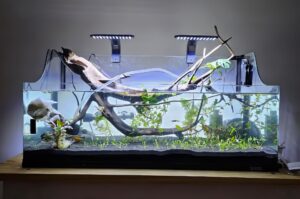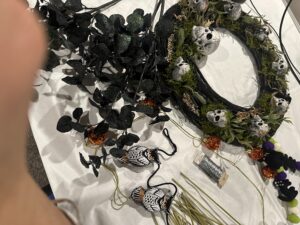Many years ago when I was a young mother, I would drag my children to the library because it was relaxing browsing through the books. They were kind children and allowed me to enjoy a bit of time getting excited over my new finds and interests. I stumbled across “Worms Eat My Garbage” by Mary Applehof on one of these outings. This book is an informative and inspiring read that caused me to want to dive right in to worm bin composting. You probably can guess that I was going to wait many years, due to a busy life, before a good time came along, but the interest in vermicomposting didn’t go away. Yes, now to tell Jeff that I would like some worms but not for fishing. His expression was so confused! However, being a good sport he helped me try to build a bin system from storage totes and we did keep the worms happy under our stairs for about a year. In many ways that system was a success. It was a good start I enjoyed learning about the art of vermicomposting. That’s really how this blog post came about.
“Vermicomposting is similar to traditional composting. Both use natural processes to stabilize organic matter.” (OSU The Basics of Vermicomposting). In my understanding, by composting we are trying to hold on to organic components and not have them gas off into the atmosphere. If we keep carbon, nitrogen, and other minerals in the soil the soil food web is optimized. I think of it by forming a mental picture of a circle with soil leading to plant roots leading to microbial interactions with the plant roots as the bacteria and fungi process the exudates( sugars) from the roots and they gather the minerals from the soil leading to the plant growth, then the plant returns it’s organic material back to the soil. That is my goal in producing vermicompost. It has the advantages of being convenient, noiseless, and odorless if you take care with feeding the worms correctly.
This spring I had help from a granddaughter in setting up a Vermihut. This product is a tower system with trays that you rotate in caring for your worms. It has only been a couple of weeks since setting the unit up but I am having a whale of a good time using it. So far we have populated the bin with Red Tiger Worms. These are worms for composting that feed from the top 6 inches of bedding or so and are appreciated for breaking down common kitchen scraps. I have them in a bedding of shredded cardboard and coconut coir that came with the Vermihut. We moistened the bedding to damp consistency before introducing our worms.
The worms have had one small feeding of 2 strawberries which had been frozen and a lettuce leaf. We put in some ground eggshell for the worms gizzards (they have this organ to grind the foods in their digestive process), used coffee grounds and ground up oatmeal. That starts the bin off by not overloading the worms and causing them to crawl out.
These worms enjoy eating vegetable leftovers and peelings, fruits and fruit peelings (but take caution with citrus due to acidity), stale breads and baked treats that have passed freshness. They like ground coffee spread out and used tea leaves. They like bits of paper and egg cartons of pressed paper, rolls from paper towels and toilet tissue. They also enjoy ground grains, seeds, and eggshells. That is my plan to feed for now in order to watch the bin doesn’t overheat or become acidic.
The Vermihut lived under a floor lamp with the top off for two days in order to encourage the worms to acclimate to their new home and not escape. Tricky little buggers sometimes, they get discombobulated and crawl out of the bin.
The key for keeping the worms happy is to provide a moist, but not soggy, bedding, gauge how much to feed them by how much they finished from the last feeding, and maintain temperatures between 40 and 80 Fahrenheit or 4.5 to 27 Celsius.
I’m really looking forward to using this new system and growing my worm bin for the garden. It also makes me feel I’m doing a tiny part to reduce organic matter going to the landfill.
Thanks everyone for reading along with my blog and wishing you happy gardening this next week.
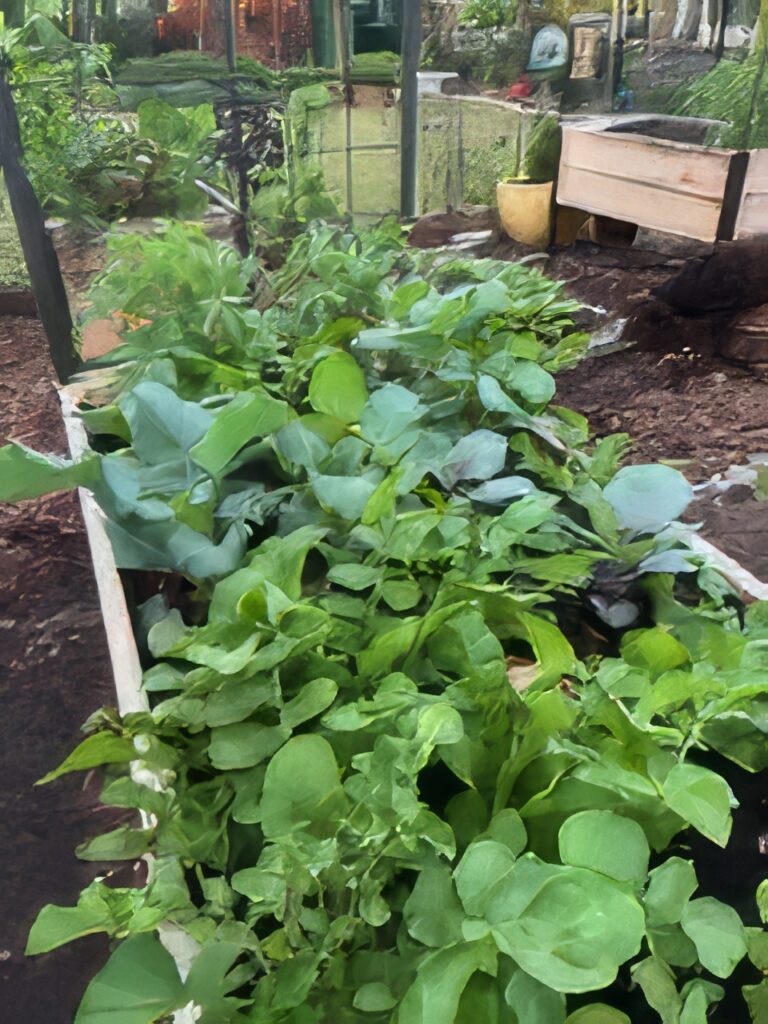
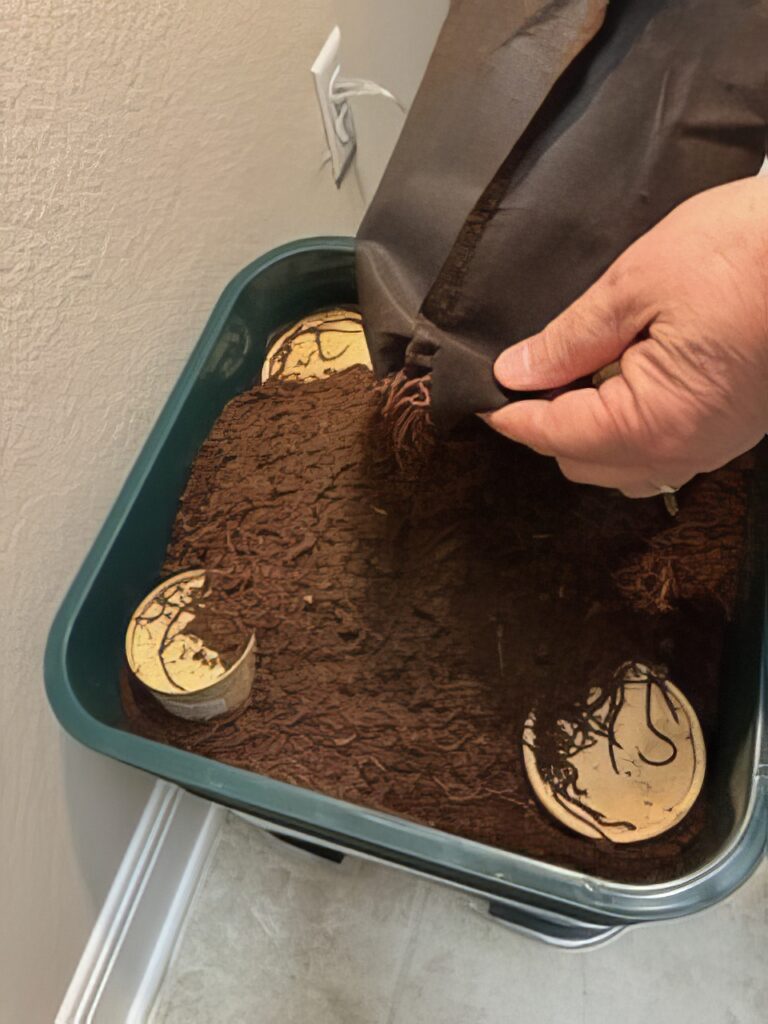
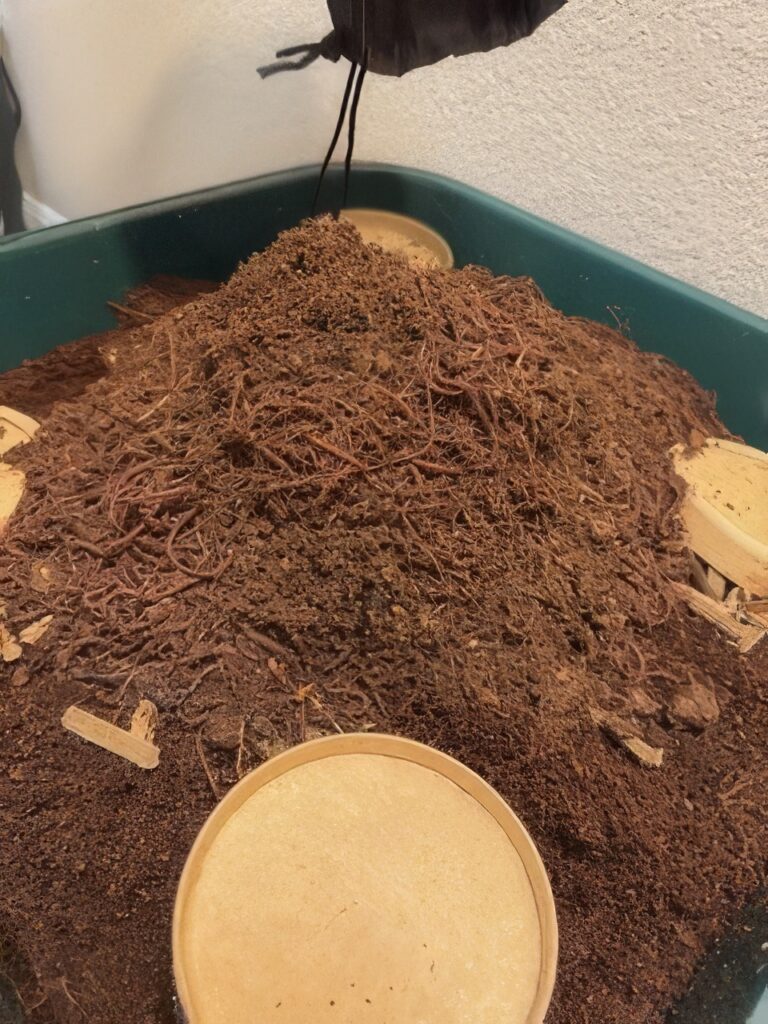
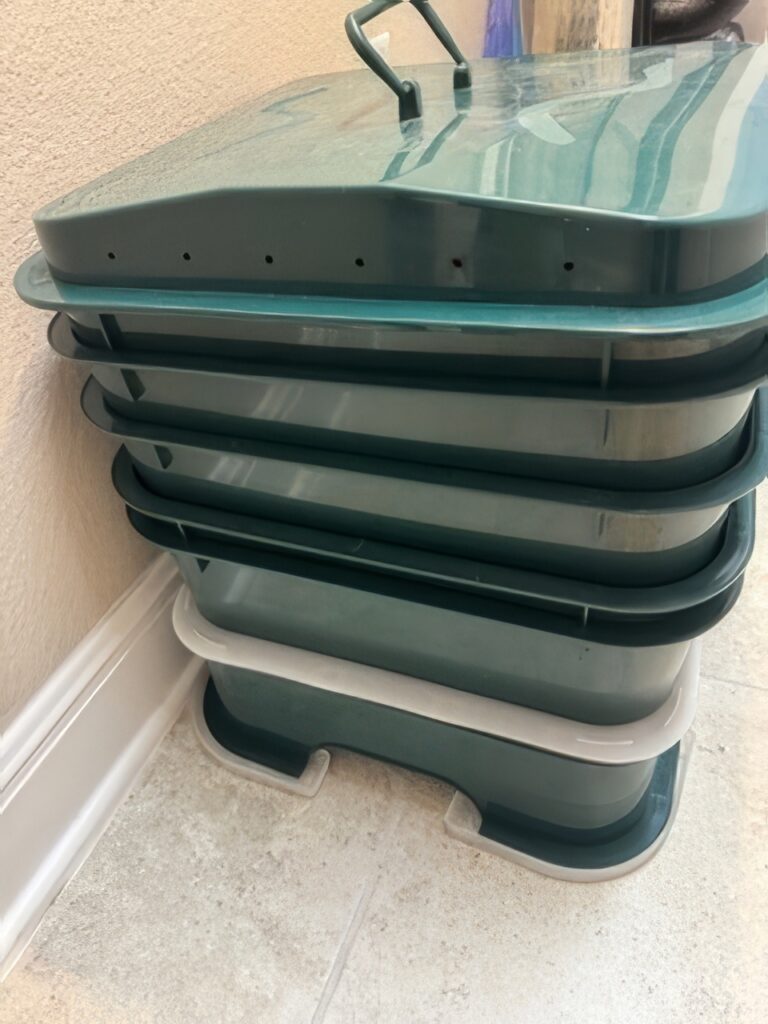
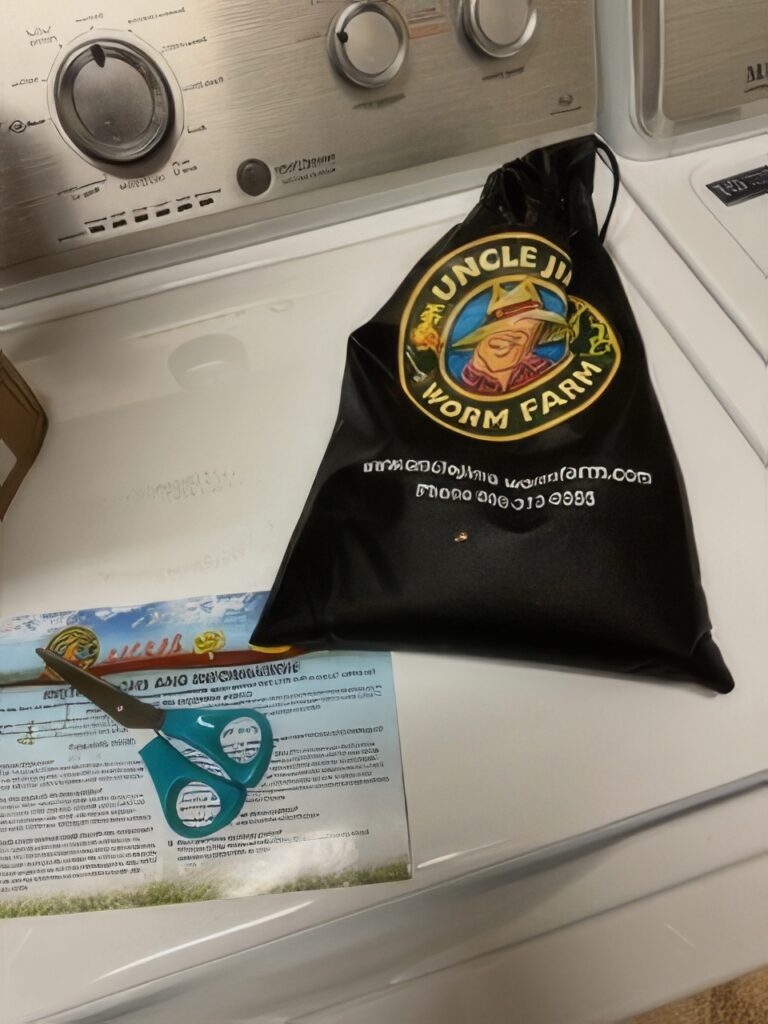
Sources:
“Worms Eat My Garbage” written By Mary Appelhoff and Joanne Olszewski. 35th Anniversary Edition (2017 Story Publishing)
Texas A&M Agrilife Extension, Home Worm Production
Oklahoma State University, Oklahoma Cooperative Extension Service, The Basics of Vermicomposting BAE-1528. By Douglas W. Hamilton
YouTube Channel: Vermicompost Learn by Doing


